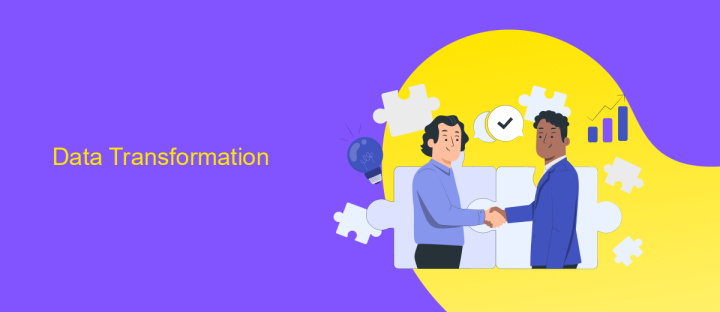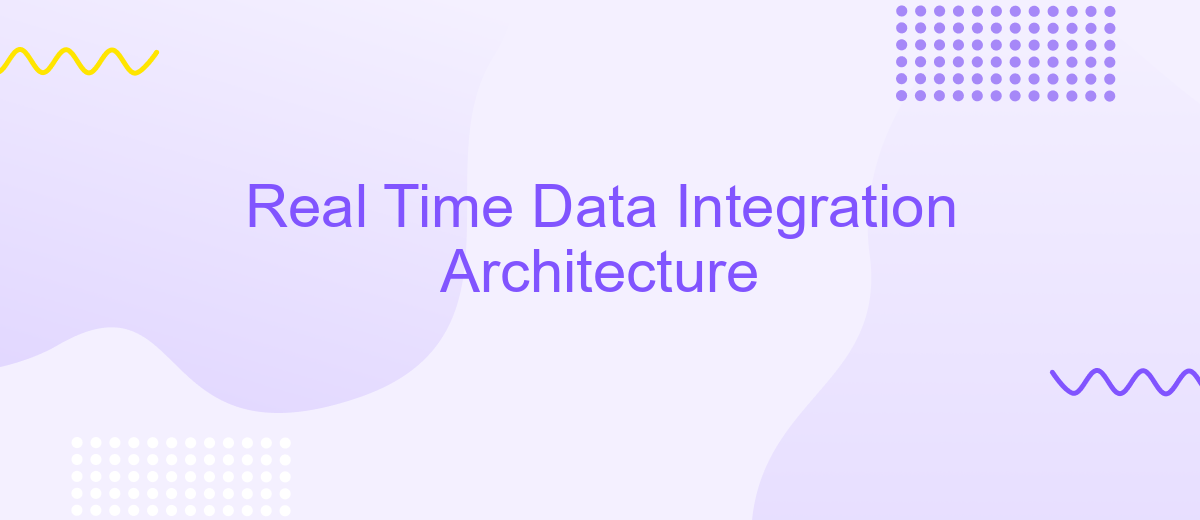Real Time Data Integration Architecture
In today's fast-paced digital landscape, real-time data integration has become essential for businesses seeking to stay competitive. This architecture enables the seamless flow of information across various systems and platforms, ensuring timely and accurate data availability. By leveraging real-time data integration, organizations can make informed decisions, enhance operational efficiency, and improve customer experiences, driving overall business growth and innovation.
Data Sources
Real-time data integration architecture relies heavily on a variety of data sources to ensure seamless data flow and accurate analytics. These data sources can range from traditional databases to modern IoT devices, each contributing unique data sets that need to be integrated in real-time. Understanding the nature and capabilities of these sources is crucial for the efficient design and implementation of the integration architecture.
- Relational Databases: These are structured data sources like MySQL, PostgreSQL, and SQL Server, commonly used for transactional data.
- NoSQL Databases: These include MongoDB, Cassandra, and Redis, which are optimized for unstructured data and flexible schema designs.
- Streaming Data Platforms: Apache Kafka and Amazon Kinesis are examples that handle real-time data streams effectively.
- IoT Devices: Sensors and smart devices that provide continuous data streams, critical for real-time analytics.
- APIs and Web Services: RESTful APIs and SOAP services that facilitate data exchange between different systems in real-time.
By leveraging these diverse data sources, organizations can build robust real-time data integration architectures that support dynamic and scalable data processing. Each type of data source brings its own set of advantages and challenges, making it essential to carefully select and manage them to achieve optimal performance and reliability.
Data Transformation

Data transformation is a critical component of real-time data integration architecture. It involves converting data from its source format into a format that can be used by the target system. This process ensures that data is consistent, accurate, and useful. The transformation can include tasks such as data cleansing, data enrichment, and data normalization. These tasks help in removing inconsistencies, adding valuable information, and standardizing data formats, respectively. The goal is to ensure that the data is in the best possible shape for analysis and decision-making.
Several tools and services can facilitate data transformation. One such service is ApiX-Drive, which offers a user-friendly platform for setting up integrations and automating data workflows. ApiX-Drive allows users to map data fields between different systems, apply transformation rules, and monitor the data flow in real-time. This makes it easier to handle complex data transformation tasks without requiring extensive coding knowledge. By leveraging services like ApiX-Drive, organizations can streamline their data integration processes and ensure that their data is always ready for real-time analytics and reporting.
Data Delivery

Data delivery in real-time data integration architecture ensures that data is transmitted from source systems to target systems with minimal latency. This process is vital for maintaining the accuracy and timeliness of data, which is crucial for making informed business decisions. Efficient data delivery mechanisms help in minimizing delays and ensuring that data is available for analysis and reporting as soon as it is generated.
- Data Extraction: The initial step involves extracting data from various source systems, such as databases, applications, or IoT devices, in real-time.
- Data Transformation: The extracted data is then transformed to match the format and schema of the target system, ensuring compatibility and consistency.
- Data Loading: Finally, the transformed data is loaded into the target system, such as a data warehouse or a real-time analytics platform, for immediate use.
Implementing a robust data delivery mechanism involves selecting appropriate tools and technologies that can handle high-velocity data streams. It is also essential to monitor and optimize the performance of the data delivery process to ensure that it meets the required service level agreements (SLAs). By doing so, organizations can achieve seamless and efficient real-time data integration, enabling faster and more accurate decision-making.
Data Consumption

In a real-time data integration architecture, data consumption is a critical phase that ensures the processed data is effectively delivered to various endpoints. This phase involves transforming, routing, and delivering data streams to the appropriate systems or users who need it for decision-making, analytics, or operational purposes.
Data consumption can occur in various forms, depending on the requirements of the end-users and the nature of the data. It can be achieved through direct API calls, real-time dashboards, or by feeding data into other systems like data warehouses or machine learning models.
- Real-time dashboards: Visualize live data for immediate insights.
- APIs: Allow applications to consume data programmatically.
- Data warehouses: Store data for historical analysis and reporting.
- Machine learning models: Use data for predictive analytics and automation.
Ensuring efficient data consumption requires robust mechanisms for data delivery, monitoring, and scalability. This guarantees that the data reaches its destination in a timely manner, maintaining the integrity and reliability essential for real-time operations.


Monitoring and Management
Effective monitoring and management are critical components of a robust real-time data integration architecture. Continuous monitoring ensures that data flows seamlessly between systems, identifying and addressing potential bottlenecks or failures in real-time. This proactive approach minimizes downtime and ensures data consistency across all integrated platforms. Tools such as log analyzers, performance dashboards, and alerting systems play a vital role in maintaining the health of the integration processes.
For efficient management, leveraging services like ApiX-Drive can be highly beneficial. ApiX-Drive simplifies the setup and maintenance of integrations, offering a user-friendly interface to connect various applications without requiring extensive coding knowledge. It provides real-time monitoring features, alerting users to any issues that may arise and offering detailed logs for troubleshooting. By integrating ApiX-Drive, organizations can ensure that their data integration architecture remains agile, scalable, and resilient to changes, thereby supporting continuous business operations.
FAQ
What is Real Time Data Integration Architecture?
Why is Real Time Data Integration important?
What are the key components of Real Time Data Integration Architecture?
How can businesses implement Real Time Data Integration effectively?
What challenges might businesses face with Real Time Data Integration?
Apix-Drive is a simple and efficient system connector that will help you automate routine tasks and optimize business processes. You can save time and money, direct these resources to more important purposes. Test ApiX-Drive and make sure that this tool will relieve your employees and after 5 minutes of settings your business will start working faster.

